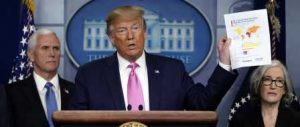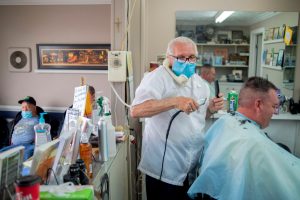A falsified letter looking like an official press release from various government agencies has been obtained by New Jersey’s Department of Homeland Security. The letter, dated May 5, claimed New York residents would be prohibited from entering New Jersey beginning on Sunday as way to prevent transmission of the new coronavirus.
“As of 10 May 2020, there will be no New Yorkers allowed within the parameters of the state of New Jersey,” the counterfeit release read. It went on to say that state law enforcement would be requesting “state identification” from pedestrians and drivers operating vehicles with New York license plates. The letter also threatened fictitious disciplinary action.
“If this identification was not issued in the state of New Jersey, the persons will be taken into custody, and escorted back to New York,” the letter continued, claiming the measure had been enacted to “ensure curbing the spread” of the virus. “The exponential possibility of New Yorkers bringing the virus into the state of New Jersey at staggering numbers has become the forefront of the concerns of our governmental and administrative offices.”
In a message shared on Twitter Wednesday afternoon, New Jersey’s Homeland Security Department confirmed the memo was bogus, despite bearing legitimate seals belonging to the federal Department of Homeland Security, the New Jersey Office of Emergency Management, the New Jersey State Police and the “National Chaplains Association” (no such organization by that name appears to exist).
“The letterhead appears to be taken from a legitimate letter but with the false information inserted below and then signed by a fictitious person,” the New Jersey department’s tweet noted, citing comment from an analyst who evaluated the counterfeit message.
ALERT: Beware of a false letter/press release with joint seals of federal and State agencies stating New York residents cannot enter New Jersey starting May 10 due to #COVID19. There is no such order. The statement is from a nonexistent agency and signed by a fictitious person. pic.twitter.com/zOALlVfmPd
— NJ Homeland Security (@NJOHSP) May 6, 2020
The department’s alert additionally pointed out the letter’s typographical and logical errors, referencing a statement near its closing that said “special identification” would be distributed to New Jersey residents with children several days after enforcement procedures supposedly took effect. Earlier during the pandemic, New Jersey’s homeland security authorities set up a webpage for dispelling rumors and identifying scams related to the virus outbreak.
While travel bans between New York and New Jersey do not exist—according to a federal judge’s recent ruling, interstate travel bans, in general, are unconstitutional—both states have implemented extensive mitigation measures in response to the outbreak. On Wednesday, Governor Phil Murphy extended by 30 days the state’s executive order declaring a public health emergency.
“Extending this declaration ensures that we can continue using every resource at our disposal to mitigate the spread of COVID-19,” Murphy said in a statement. His office is drafting a reopening plan for the state, which the second highest incidence of new coronavirus cases nationwide, behind New York.
“I want to ensure that this extension is not interpreted to mean that we are reconsidering our path forward or changing course on the principles I laid out last week in the Road Back plan,” the governor’s statement continued. “We will continue to stand by these principles and protect public health as we responsibly take steps to get the economy moving again.”
According to Johns Hopkins University’s tracker, New Jersey had confirmed 131,890 cases of the coronavirus as of Wednesday afternoon, with 8,549 deaths and 15,642 recoveries. New York, the virus’ national epicenter, had confirmed 321,192 cases, 25,100 deaths and 58,950 recoveries. Cumulatively, both states’ figures account for nearly 40 percent of all cases diagnosed in the U.S., and more than 45 percent of all deaths.



















